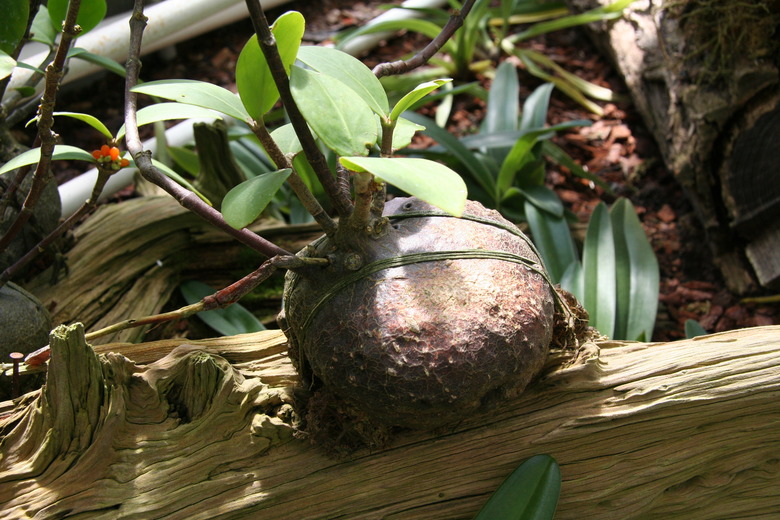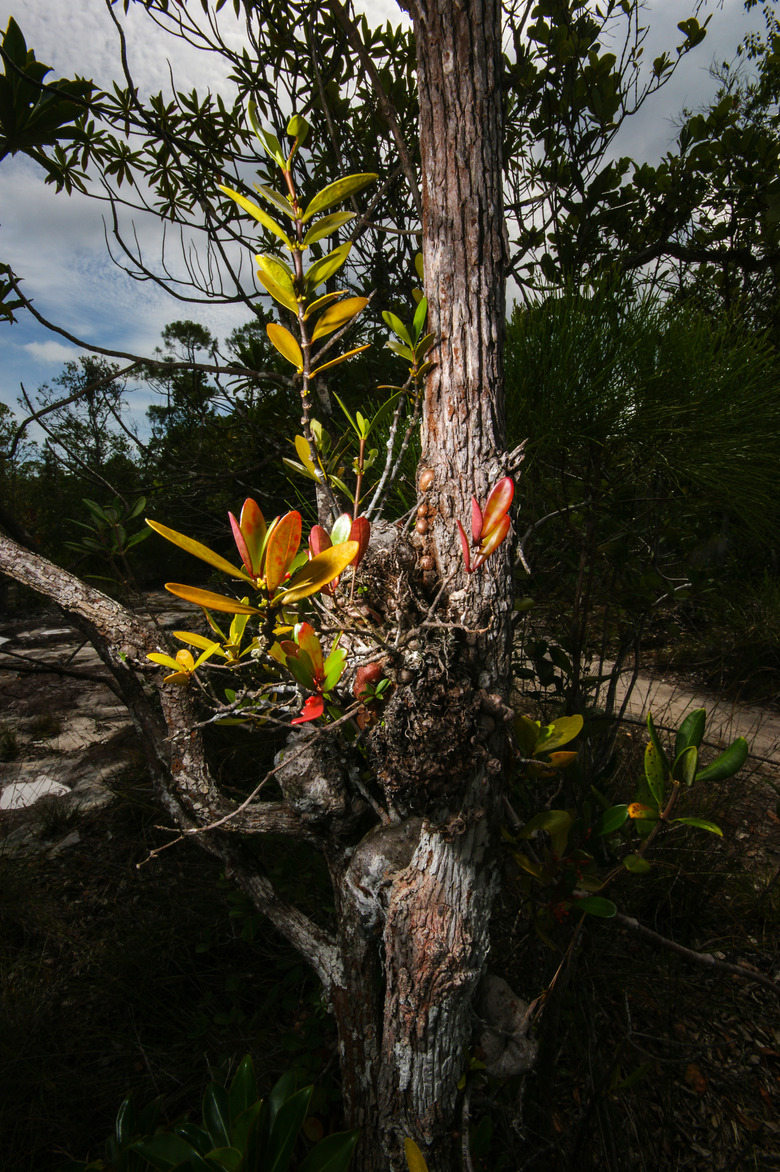Ant Plant Care
The term "ant plant" refers to a large group of plants called myrmecophytes, which evolved to have a beneficial relationship with ants.
One species that is sometimes cultivated by curious gardeners is the maze plant (Hydnophytum papuanum), which is also called the ant plant. It will survive outdoors in USDA plant hardiness zones 10a and above, but it is typically grown as a houseplant.
The maze plant requires very little hands-on care and will tolerate neglect, but it needs the right growing conditions to perform well, particularly when grown as a houseplant.
About Ant Plants
Over 100 genera of plants are classified as myrmecophytes, all of which are native to the tropics. They all possess adaptations to provide shelter and nutrients to ants. In turn, the ants protect the plants by stinging foraging animals who might eat the plant, and they also help the plant reproduce by transporting the seeds and consuming the outer hull, which helps the seeds germinate.
Ant plants provide benefits to ants within their natural habitat, **but they do not attract ants and will not cause an ant infestation.** So you don't have to worry about growing one of these fascinating plants in your home.
Ant Plant Care
Ant plant care is minimal when good growing conditions are provided. The right watering and feeding practices are especially crucial when growing ant plants, but they may also need pruning and occasional troubleshooting to prevent damage.
Watering Tips
Ant plants need watering similar to that for cacti and other succulent plants. They grow best when kept slightly dry, but they also need moisture to keep their caudex plump.
- Water during the active growing season whenever the soil feels slightly dry.
- Water just enough during the winter months to prevent wilting.
- Reduce watering if an ant plant is grown under dim conditions.
Tip
Water your ant plant with distilled water or rainwater instead of tap water whenever possible.
Fertilizer Needs
Ant plants need a moderate amount of fertilizer to support their growth, but they are also sensitive to salt buildup in the soil, particularly when grown in a pot.
- Feed weekly during the spring and summer months when the plant is actively growing.
- Use a balanced fertilizer, such as 10-10-10, at half the recommended rate.
- Occasionally flush the soil of potted ant plants with water to prevent salt buildup in the soil.
Tip
One sign of salt buildup in the soil is a whiteish, crystal-like crust that forms on the surface.
Pruning and Pest Control
Ant plants only need pruning to shorten the branches or to maintain a certain form. Prune only when the humidity is low and the growing medium is dry, because pruning under humid, wet conditions will create ideal conditions for bacterial growth and disease.
Tip
Wipe down your pruning shears with rubbing alcohol to kill off any pathogens.
Ant plants rarely suffer from serious problems but can occasionally suffer from mealybug infestations when grown indoors or slug damage when grown outdoors.
- Spot-treat mealybug infestations with a cotton swab dipped in rubbing alcohol, which will kill and remove the bugs.
- Manually remove any slugs that appear on the plant outdoors and prune off any slug-damaged foliage using sharp, clean pruning shears.
Growing Ant Plants
Growing ant plants under the right conditions will help keep your plant healthy and reduce the risk of problems developing.
Light and Temperature
Ant plants need bright, indirect light because direct sunlight is often too intense. Strong sunlight can stress the plant and cause discolored foliage or a general decline in vigor.
- Choose a location near a west- or east-facing window when growing them indoors.
- Outdoors, ant plants should be grown under light shade or dappled shade with some direct sunlight in the morning.
If a potted ant plant develops discolored foliage or if it tends to wilt during the hottest part of the day, try moving it to a dimmer location.
Ant plants grow best when temperatures are above 60°F, but some varieties will tolerate short periods of temperatures in the high 30s.
Soil Conditions
Ant plants perform well when pot-bound. Plant ant plants in a small pot with drainage holes at the base and use a fast-draining growing medium. These epiphytic plants especially thrive in sphagnum moss or in lightweight growing compost amended with shredded bark.
Humidity Levels
Humidity is a key factor when growing ant plants at home. They grow best when humidity is above 50% but will not suffer any serious damage when grown in drier conditions. To raise humidity levels around the plant, try:
- Planting the ant plant in the bathroom or in the kitchen where humidity levels are naturally higher.
- Setting the pot on a tray of wet pebbles to raise humidity levels around the foliage.
- Misting the plant every day to help raise humidity levels.
Warning
Too much moisture can cause fungal growth on the foliage, so don't leave the foliage continuously saturated.

